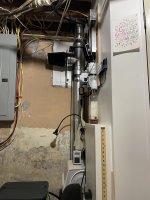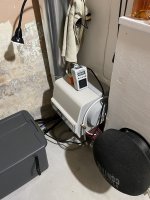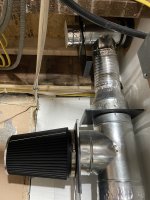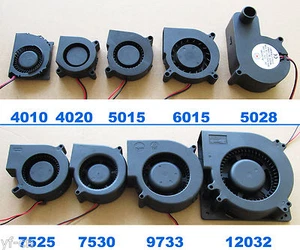Ca++
Well-known member
I do this, but the temperature difference between the exhaust and room is not that great. Along the exhausts run, it cools a few degrees. I want to increase the difference. So less heat leaves. This means bringing in the colder air, straight to the exhaust duct. Boxed away. So by the time that cool air gets out that box, it's close to the temp the air left the tent.Yep... grew at 10k feet for a few years and LOVE the -50F temps and almost no RH. (Your grow provides more RH than you might think.)
I used a Lux-100 thermostat outlet for years, and quite a while before inkbird came heavy on the scene.
Run your intake ducting around the top of the room a good 10' before exiting. Combining that with a thermostat controlled outlet will keep your room temps perfect. Lots of fresh air and zero worries about freezing your plants.
I like these semi-circular supports, that get the air taking a longer route.
I think I can get some alloy 2" mast poles quite cheap. 6 of them might might make a core I can afford to try, for a 4" exhaust system.

I won't fold it back upon itself.
Today I'm making a duct system to reduce the stratification. I have a couple of 4" socks on my tent, one top, one bottom. I'm externally piping them together, using downpipe and a couple of elbows.
The elbows have them nice ridges, for the sock to engage with.
I have this to attach a fan

I will hot glue a 12v blower to it. Then put it in the bottom elbow. The blower will easily get air from the downpipe, and chuck it out at 90 degree's to it. So at the floor, or sideways to take it around the tent with the aid of circulator fans. I could glue the fan straight to the elbow, but I like this modular approach, that offers some adjustment. I can still twist the blower about.








